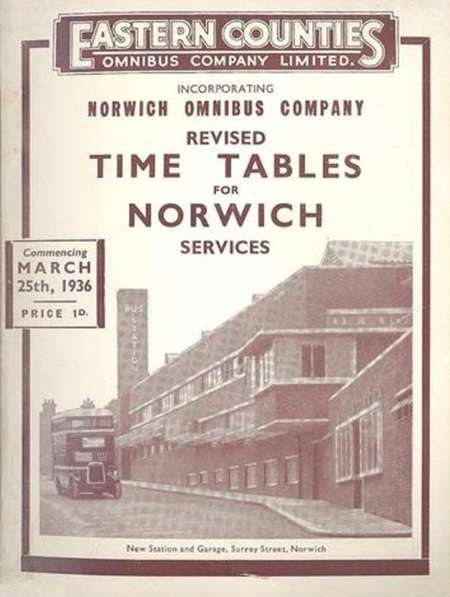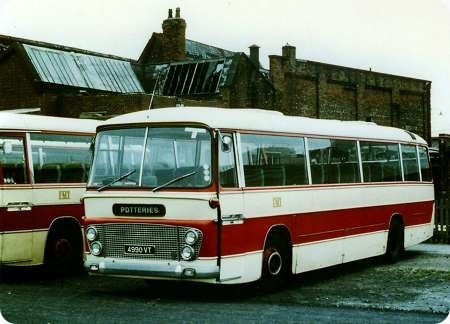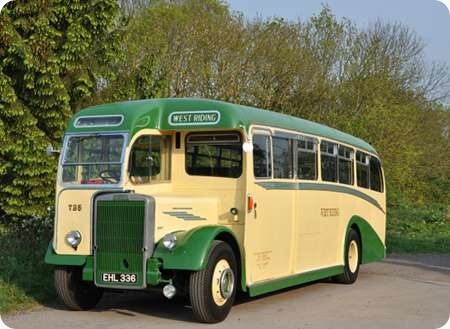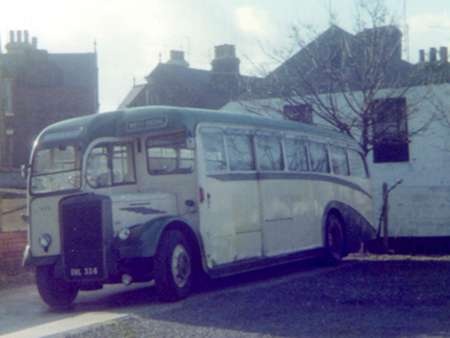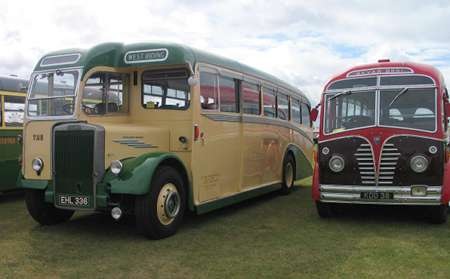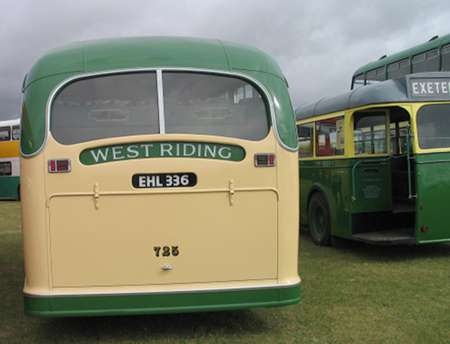Eastern Counties – Bristol K5G – LKH 255 – KNG 255
Eastern Counties Omnibus Company
1950
Bristol K5G
ECW H56R
This is a picture taken in my teen-age years of one of my favourite K5G’s which used to regularly run the route 92A to my home council estate in Norwich. Taken in Surrey Street garage on 23rd August 1969 it rests for the night.
The bus was withdrawn at the end of March 1970.
Surrey Street Bus Station was built on a rising gradient between Surrey Street and Queens Road, and opened in 1936. The garage was huge (able to store 180 buses I believe). The area is still the bus station, but in its place now is a modern bus terminus right on the spot where the garage was.
Photograph and Copy contributed by Graham W
15/08/13 – 17:40
Nice "atmospheric" shot, Graham. Thanks for posting.
Pete Davies
16/08/13 – 06:36
Yes and amazingly the first Eastern Counties bus on the site – just as I was preparing to send one myself to redress the deficiency.
John Stringer
16/08/13 – 14:51
Interesting that the ECOC Ks lasted until 1970. All the Bristol Omnibus ones had gone by 1966. More hills there of course but most were K6A or 6B.
Geoff Kerr
17/08/13 – 16:37
What a great photograph, which brings the memories flooding back from the days when I drove for E.C.O.C at Cambridge (1970-1975). It could easily be mistaken for Hills Road garage, in the late evening when all the buses are back in and cleaned, refuelled etc., ready for the run out. In my day they would have been LKH’s and LKD’s. On freezing winter mornings the exhaust smoke would billow out from the garage as the buses were on cold start, and I can still feel the icy cold steering wheel almost sticking to my hands… gloves were essential for an early start. What would I now give for an opportunity to drive one of these on the 106 up to Girton Corner and back through the city centre and on to Red Cross (now Addenbrooke’s Hospital)
Norman Long
17/08/13 – 16:39
In the submission by Graham W on the ECOC Bristol K5G, he makes mention of the Surrey Street Bus Station built in 1936.
Attached is a copy of the ECOC Timetable commencing 25th March 1936 for Norwich Services.
ECOC have not wasted a second in advertising the new facility to its passengers by putting it on the front of the latest Timetable.
How much more interesting is that cover than the modern day stuff.
Stephen Howarth
02/07/14 – 06:30
I remember the SC with ECOC. Lowestoft had TVF 520 which was deployed on the 20A to Rock Estate. Noisy and slow! Attractive little bus though. Yes, the back axle was a BMC one.
The K? attractive bus but with a 5LW decidedly sluggish. Seats were a darn sight more comfortable than the nasty plastic things too many operators are fond of now. The interior was also more welcoming, I think, not having that awful dark grey ceiling you see too often now. LKH 173, OVF 173 was at Lowestoft into the 1970s. As regards driving them, one of the inspectors at Lowestoft described them as "..horrible things to drive.."
Brian Moore
02/07/14 – 11:00
Two lovely pictures above from the days of "real" bus operation. I shall never forget my first encounter with beautiful Cambridge, when I worked for Wallace Arnold and was on my very first tour feeder from Leeds to Southend Airport – no route learning of any kind in those days, and only an inadequate "Roneo stencilled" A4 sheet with scant information for the 207 mile journey. Lunch was at the University Arms – unloading and parking nigh on impossible – after which the sheet advised "via A10/A130 Trumpington High Street" etc etc. By now I was well over an hour late and breathed a sigh of relief when I saw the sign "A10." I couldn’t help noticing lovely red ECOC Bristols coming the other way showing "Trumpington" and began to worry – surely more than one driver wouldn’t have forgotten to change the destination blind ?? I pulled up and asked a friendly constable about the route and his kindly face looked sorry for me as he said "Oh no, you’re on the A10 to Ely, you should be on the A10 for Royston."
I was now ready to abandon ship and run away but carried on, somehow. I think the only thing that saved my sanity that scorching hot summer day was when I descended a long hill lined with lovely trees into a beautiful unspoilt market town, "Saffron Walden." Older readers may remember the comedy radio weekly show "Much Binding in the Marsh" in which Richard Murdoch and Kenneth Horne were RAF officers who always asked each other "Are you going to Saffron Walden for the weekend Sir?" I’d always thought that like the title of the show Saffron Walden was an invented "spoof" name !! Eventually arriving at Southend Airport at 7.00pm (two hours late) the rampaging courier, a Spanish man who should have been with me from Leeds but helped himself to two unauthorised days off, cried out "Veeere ‘av you been – ve have dinner in Ostende at 7.30pm." By now completely drained I asked him where had HE been as it was part of his job to show me the route. I managed to smile to myself with relief at the thought of the Channel Airways Dakota being spectacularly unable to reach Belgium in time for the soup !! After that, the Southend run became one of my favourite jobs which I did often, and during our evenings there I fell in love with the town and the Essex area. The cherry on the cake was the arrangement whereby the coaches were cleaned and refuelled at Prittlewell depot by Eastern National.
Chris Youhill
28/07/14 – 07:49
Like Norman Long, I was also a driver with ECOC at Cambridge. I later moved to St Ives outstation and then Peterborough, by which time the area had become Cambus. At Peterborough I became the regular driver of the by-then-semi-preserved FLF453 with, usually, Ken Johnson on the back. FLF453 was one of the class I also drove regularly whilst it was based at Cambridge. One ‘pig’ of an FLF was 465 which during its last years had only a four speed gearbox fitted. Nobody told unfamiliar drivers about this and they found out the embarrassing way – as I did one day on Victoria Avenue.
Regarding the LKH class, the last 7′ 6" example in Cambridge was 135(HPW 135)and I believe this became the final 7′ 6" K in the ECOC fleet. Of the 8′ versions, the final pair in Cambridge were 168 (OVF 168) and 269 (LNG 269). The honour of being the final example in Cambridge fell to 269 which I believe just made it into 1971. One of the FAH registered examples, FAH 106, also lingered on in Cambridge almost to the end. It was still running in 1969 anyway.
On that very well served destination ‘Service’, I believe the habit of displaying this originated back in ‘tin bible’ days when changing destinations involved a rummage through a hut in Drummer Street. But in later ECOC years ‘Service’ was displayed sometimes out of laziness but sometimes because the bus concerned had come from another depot. The practice of displaying ‘Service’ was officially prohibited if the proper display was available but the inspectors and management never really bothered to enforce it. The practice continued into Cambus days. Displaying ‘Service’ wasn’t really a problem as local people knew the routes and tourists didn’t know the difference between Service, Red Cross, Keynes Road, Foster Road or Fen Estate anyway!
The SC4LK (LC) was a horrid, noisy little thing. The back axle was indeed a BMC product (usually quoted as being from Austin) and I think the gearbox was a David Brown effort. The Gardner 4LK engine was essentially the same unit as used in the midget submarines of WWII. On thing I remember the LC for was the enormous reversing lamp on its rear. Also, if memory serves me correctly, there was a bell cord along the saloon ceiling similar to that used by London Transport instead of bell pushes.
Cambridge depot had LKH256-260 and possibly 261. Of those 256-8 spent just about all their lives at Cambridge.
The KNG (and onwards) registered examples always seemed modern in their day due to having stainless steel (or chrome plated) grab poles and seat grabs. Earlier K’s (HPW, GPW, FAH, FNG etc registrations) usually had wooden seat grabs and grab poles covered in some sort of black plastic. Another difference, not visible on the picture of 255, was the upper deck front grabrails. KNG reg. onwards had two separate grabrails mounted on top of the destination box, whereas earlier K’s had a black rail mounted midway up the front windows and passing right across. From memory the lowbridge LK types similarly differed according to age.
Darren Kitson
Quick links to the - Comments Page - Contact Page - Home Page

